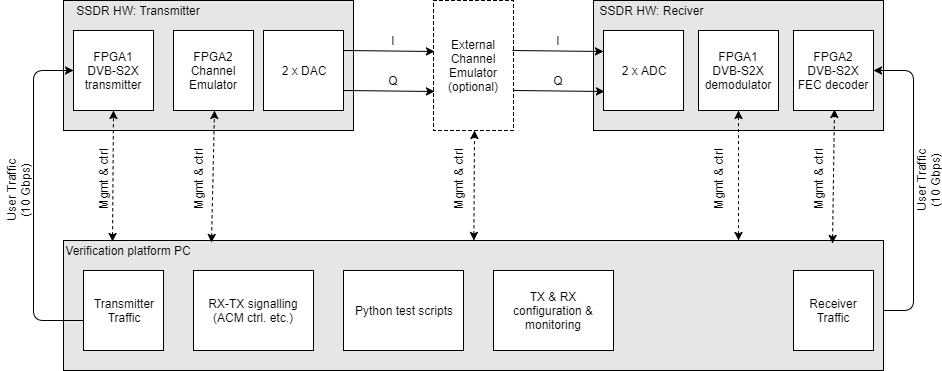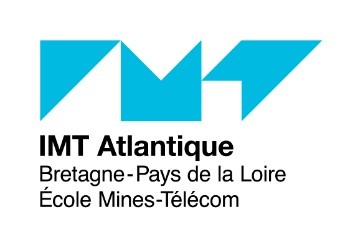
-
StatusCompleted
-
Status date2021-09-29
-
Activity Code7B.039
The objective of the project was to develop and implement a demonstrator for DVB-S2X wideband transmission links supporting baud rates up to 1.4 Gsps. The following modules are included in the demonstrator:
- DVB-S2X transmitter
- Wideband channel emulator
- DVB-S2X receiver
The demonstrator supports user bit rates up to 4.9 Gbps for 16APSK modulation, while the design is prepared for higher order modulation and higher user bit rates.
The main challenges in the project was the high baud rate, the high bandwidth and the high user data rate.
The DVB-S2X modem that was developed in this project supports significantly higher baud rates and larger bandwidths than any other commercially available products, and demonstrators, available in 2018. The modem allows for more efficient use of wideband links where a single DVB-S2X carrier now can be used in place of multiple 250-500 MHz DVB-S2X carriers.
- Baud rates from 30 Msps to 1400 Msps
- On-the-fly adjustable baud rate
- Adaptive Coding and Modulation (ACM)
- Powerful, flexible and module-based hardware platform where FPGA, DAC, and ADC modules can be upgraded separately
- Fully in-field reprogrammable modem where algorithms and air interface can be updated
- Fixed equalizer (pre-whitening) in the transmitter
- Equalizer in the receiver
- Novel FEC decoder design supporting up to 6 Gbps user bit rate in a single FEC decoder core
- Demonstrator includes a wideband (1500 MHz) channel simulator
The architecture of the demonstrator developed in this project is shown in the block diagram below. The same hardware platform is used for both the transmitter and the receiver implementations.

- The project was kicked off in June 2018.
- The System Requirement Review (SRR) was held in September 2018,
- The Critical Design Review (CDR) was held in June 2019,
- The Test Readiness Review (TRR) was held in March 2020
- The project was completed, and the Final Review was held in August 2021.
The project is completed.






